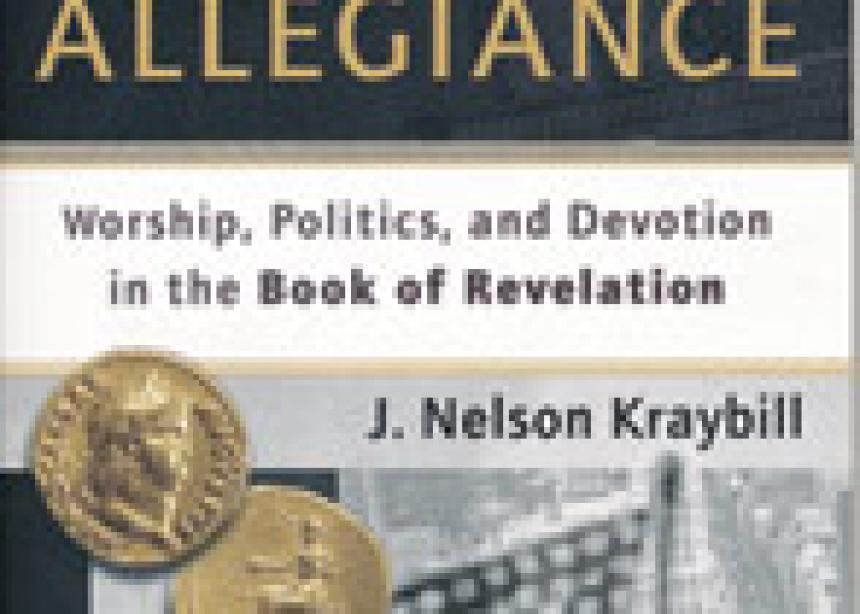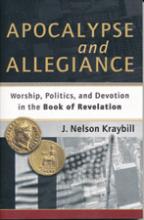In his new book, Nelson Kraybill, most recently president of Associated Mennonite Biblical Seminary, Elkhart Ind., does not follow the Book of Revelation in a linear fashion, something that will be confusing for some. But it allows him to work on themes like emperor worship, the returning Nero myth, and the patronage system of client and patron.
Kraybill works from the premise that the book was intelligible to the churches that received it in the first century AD, and that the icons, indexes and symbols in the book made sense to them. Using semiotic theory (the study of signs and symbols) “as articulated by American philosopher Charles Sanders Pierce,” Kraybill describes how the many seemingly secret and mysterious passages of the book would have helped the early Christians to navigate their lives, mostly in Asia Minor, that was part of the Roman Empire.
Revelation fits into the apocalyptic— “lifting the veil”—tradition of Daniel, Zechariah, Mark 13, and other non-biblical materials such as those found at Qumran along the Dead Sea in Palestine. Revelation was written to guide people through the world in which first-century Christians found themselves, according to Kraybill.
“Rather than starting with the expectation that Revelation will forecast events of our time, we should seek to understand the life setting of John and the believers to whom he addressed his book,” he writes. “With that background, we then can listen for what the Spirit is saying to the churches about faithfulness to Jesus Christ today.”
Kraybill constantly makes this crossover, showing how the works of John’s vision would have been received in the churches, as John encouraged them to resist giving in to emperor worship, even though membership in the guilds who controlled the economy often required it.
Instead, the heavenly worship which takes up much of Revelation pointed them to their true allegiance: Jesus Christ. Having made this point clearly and repeatedly, just as Revelation did to its first readers, Kraybill writes, “Because many Christians in North America live at relative ease in the heart of empire, it may be difficult for us to identify with the countercultural nature of worship in Revelation. We are tempted to the diversion of using Revelation as a horoscope for predicting the future, rather than as a handbook for radical Christian living in the present. Believers in the two-thirds world who deal daily with poverty or violence, however, may help us grasp the function of worship among suffering people.”
In a brief response to the divine violence in this last book of the Bible, he tries to understand how oppressed people feel about their oppressors.
Each chapter has recommended biblical readings and reflection questions, as well as a story, mostly of modern people who are giving their full allegiance to Jesus Christ in many different ways. It is a useful study guide, full of illustrations and diagrams that help the reader understand the semiotic world of Revelation and think about their allegiances.
Dave Rogalsky is the Eastern Canada correspondent for Canadian Mennonite.



Add new comment
Canadian Mennonite invites comments and encourages constructive discussion about our content. Actual full names (first and last) are required. Comments are moderated and may be edited. They will not appear online until approved and will be posted during business hours. Some comments may be reproduced in print.